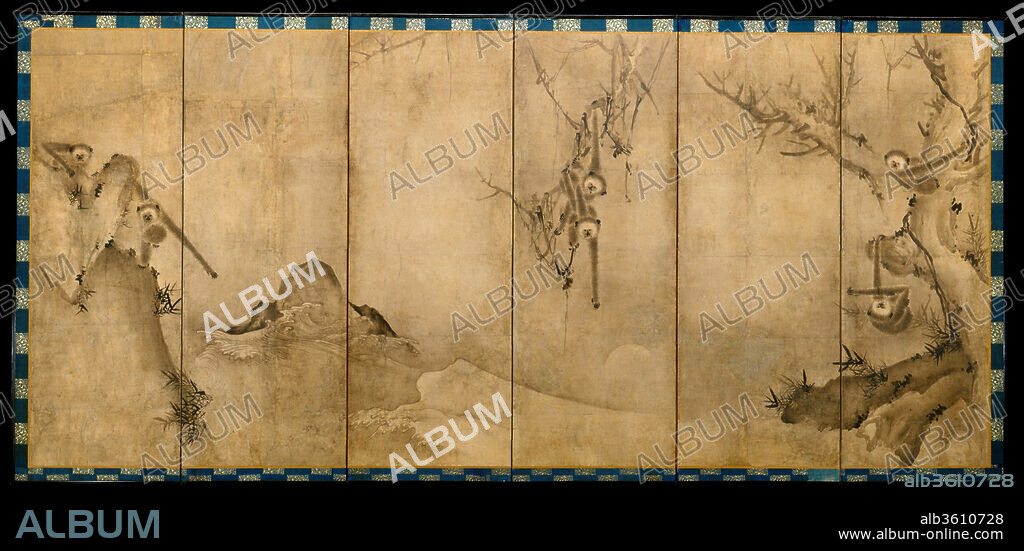alb3610728
SESSON SHUKEI. Gibbons in a Landscape

|
Añadir a otro lightbox |
|
Añadir a otro lightbox |



¿Ya tienes cuenta? Iniciar sesión
¿No tienes cuenta? Regístrate
Compra esta imagen.
Selecciona el uso:

Título:
Gibbons in a Landscape
Descripción:
Ver traducción automática
Gibbons in a Landscape. Artist: Sesson Shukei (ca. 1504-ca. 1589). Culture: Japan. Dimensions: Image (each screen): 62 in. x 11 ft. 5 in. (157.5 x 348 cm). Date: ca. 1570.
The gibbon, native to the forested mountains of southern China, is known in Japan only through painting and poetry. In literary contexts, its cry is associated with the elevated spirit of solitude, and in Daoist lore with a superior life force. Japanese Zen monks treasured images of gibbons painted by the Chinese monk Muqi (ca. 1210-after 1269), and by the late fifteenth century paintings of gibbons in the manner of this artist had become a favored subject for screen decoration. Here a chain of gibbons is shown reaching futilely for a reflection of the moon, a symbol of enlightenment. This scene illustrates a fundamental Zen paradox: if one is deliberately or overly anxiously trying to attain enlightenment, then that spiritual path will not lead to true enlightenment.
As reflected in the subject matter of many of his paintings, Sesson was a Zen monk-artist. He was a highly learned and prolific painter who studied a wide array of earlier Chinese ink painting styles and played a major role in the creation of a distinctive Japanese style of so-called Zen ink painting.
Técnica/material:
Pair of six-panel screens; ink on paper
Periodo:
Muromachi period (1392-1573)
Museo:
Metropolitan Museum of Art, New York, USA
Crédito:
Album / Metropolitan Museum of Art, NY
Autorizaciones:
Modelo: No - Propiedad: No
¿Preguntas relacionadas con los derechos?
¿Preguntas relacionadas con los derechos?
Tamaño imagen:
4573 x 2225 px | 29.1 MB
Tamaño impresión:
38.7 x 18.8 cm | 15.2 x 7.4 in (300 dpi)
Palabras clave:
ARTE ASIATICO • ASIA • JAPON • METROPOLITAN MUSEUM OF ART, NEW YORK, USA • MUEBLES • PANELES • PANTALLAS • PAPEL • SESSON SHUKEI • TINTA CHINA • TINTA
 Pinterest
Pinterest Twitter
Twitter Facebook
Facebook Copiar enlace
Copiar enlace Email
Email
